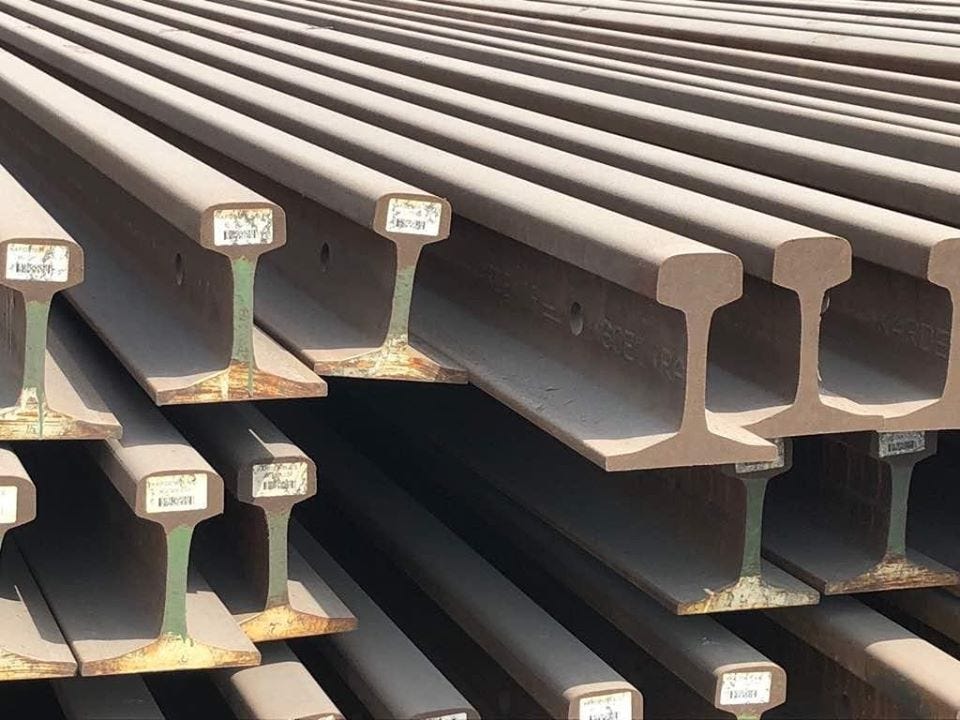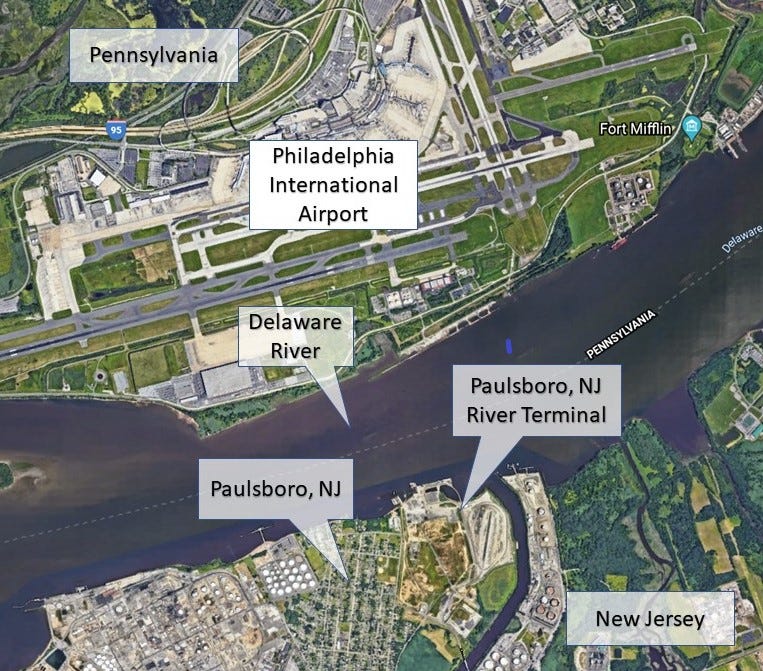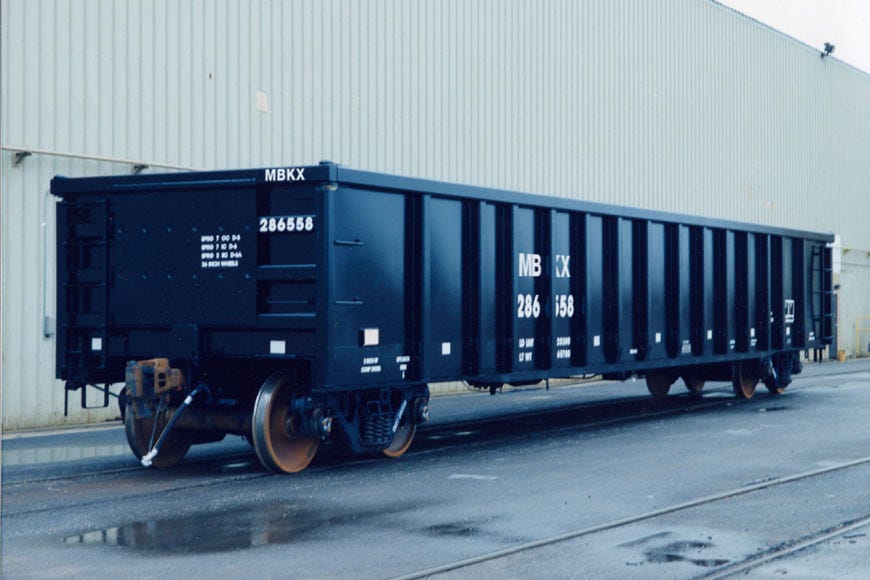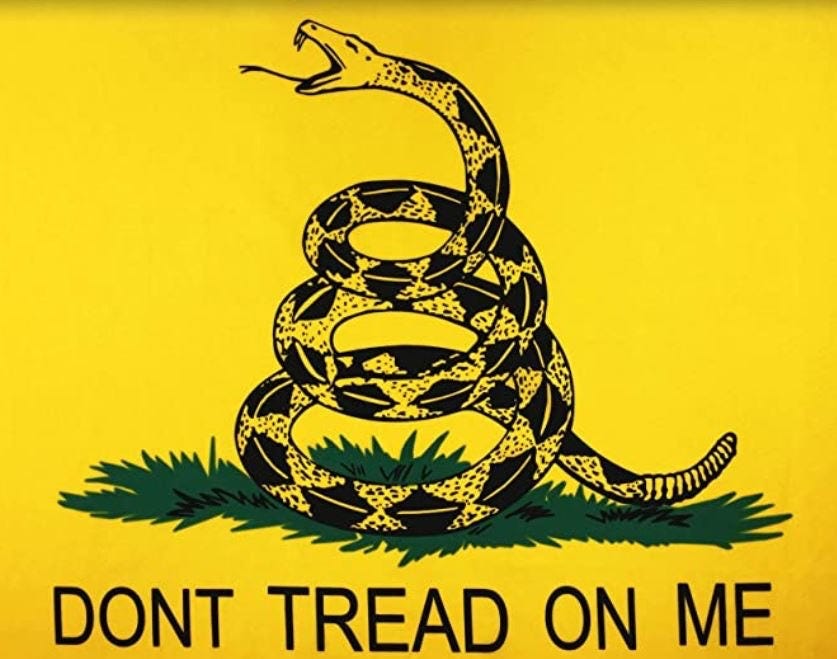Foreword
With the looming threat of Russian aggression toward Ukraine, a little-known fact about steel production looms in the background. This essay addresses the impact of a war between Ukraine and Russia regarding steel consumption and rail transportation.
The Railroading of Russian Steel
Russian freight ships use a port positioned across the Delaware River from the Philadelphia, Pennsylvania International Airport. That facility is called the Paulsboro, NJ River Terminal (PNJRT).
In 2014 Holt Holding Company, Camden Waterfront Development LLC, and terminal owner South Jersey Port Corporation (SJPC) signed a PNJRT lease agreement. Holt became the operator and construction partner of this terminal. The SJPC is a quasi-state agency, which reports through the Department of Treasury to the Governor of New Jersey. Then New Jersey State Senator Steve Sweeney (D) worked hard to make this arrangement a reality. Governor Chris Christie (R) signed the agreement. In 2018, Phil Murphy (D) won the election to the governorship of New Jersey.
In January 2019, the first Russian ship with steel arrived at the new Paulsboro port. That marked the first of many shipments in a deal with NLMK Group. The Russian company, MNLK Group, mines and makes the steel and ships its product to customers in Russia, North America, and Europe. NLMK makes up 22 percent of the steel production market in Russia. They have two steel rolling process type plants in the United States:
NLMK Pennsylvania plant in Farrell, PA, near the OH/PA border, and
NLMK Indiana in Portage, IN on the Lake Michigan waterfront
NLMK Pennsylvania at Farrell is a carbon and alloy steel supplier, including cold-rolled and hot-rolled coils. This plant receives 1.5 million tons per year from Paulsboro.
The Portage, IN plant, makes hot-rolled coils formed from steel produced by an on-site electric arc furnace supplemented with Russian steel. This plant receives some steel through ships on Lake Michigan during the summer months. In the winter, when the lake freezes, steel arrives from Paulsboro.
On an annual basis, 1.8 million tons of Russian steel arrive at Paulsboro, and roughly three NLMK ships per month come into the port. It takes five or six days to unload each ocean vessel.
Cranes lift the steel slabs out of the ocean vessel and onto trucks for transporting a short distance for stockpiling. The slabs, which weigh about 23 metric tons each, go into railroad gondolas (two slabs per car). Norfolk Southern runs trains comprised of these loaded gondolas to the destinations.
In this case, the entire train consists of gondola cars. That train makeup of only one type of car is known as a “unit train.” The steel has many uses after it leaves the NLMK facilities:
Cold rolled coils are for HVAC ductwork, metal panels on buildings, hospitals, and architectural panels for stadiums. The steel coils also go to automotive industry buyers for vehicle trim, brackets, and hydraulic tubing used for brake lines. Many appliance pieces, including refrigerator parts, also come from these coils.
Hot-rolled coils are for pipe and tubing used for recreation vehicles and tractor-trailers frames. Drilling and fracking processes and equipment also come from hot rolled coils.
Riding Russian Rails
As historical background, there were 15 major rail mills in North America (13 USA and 2 in Canada). They supplied rails to the railroads and transit railways to build and maintain the tracks. Currently, there are only three mills:
ArcelorMittal, Steelton, PA (originally the Bethlehem Steel Company, now a multi-national corporation headquartered in Luxemburg)
Steel Dynamics, Columbia City, IN (new entry in the rail making business with USA-based ownership)
Evraz, Pueblo, CO (principal owners include two Russian oligarchs headquartered in London)
No. 3 above, the Colorado Fuel and Iron Company (CF&I) was a large steel conglomerate that merged previous business interests in 1892. John D. Rockefeller and Jay Gould’s financial heirs controlled and owned it by 1903. Its main plant was a steel and rail mill on the south side of Pueblo, Colorado. From 1901 to 1912, CF&I was a Dow Jones listing. The steel-market crash of 1982 led to the decline of the company. After going through several bankruptcies, Oregon Steel Mills acquired CF&I in 1993 and changed its name to Rocky Mountain Steel Mills. In January 2007, EVRAZ purchased Rocky Mountian and the rest of Oregon Steel’s holdings for $2.3 billion.
On January 27, 2022, EVRAZ hosted Senator John Hickenlooper (D-CO) for a tour of EVRAZ Pueblo. Senator Hickenlooper was first elected to the U.S. Senate in 2021, after serving as Colorado’s governor from 2011-2019. Skip Herald, CEO of EVRAZ NA, led the tour group through the new rail mill. The tour focused on the recently passed “Infrastructure Deal.” The group discussed the economic and environmental benefits of the “Deal.” As reported by Railway Track & Structures, Senator Hickenlooper said:
That bill is going to be the largest climate investment in the history of the country and companies like EVRAZ in Colorado and all over the country are going to stand to benefit from that investment.
Analysis
Electric arc furnaces use high volumes of electricity to melt scrap steel into slabs for new products. Green New Deal enthusiasts say this is a carbon-neutral process because zero coal goes into this process to form the steel. It is questionable if a 100% renewable system will ever meet that electric-arc demand. Also, this process relies on scrap metal, a finite resource.
The fake “Steele dossier” appeared during the presidential campaign in 2016, and it claimed that Donald Trump was a Russian stooge. The Democratic party and legacy media’s hyper-concern about the supposed foreign influence of Trump is legendary.
The virtual silence concerning real Russian businesses is an embarrassment best and treason at worst. Regardless of the political intrigue, the information covered in this essay shows the vulnerability we face. We no longer have the manufacturing and energy base we once enjoyed as the premier nation in the world. The overarching foreign business influence in our country is an existential threat.
Currently, the White House is barking “extreme sanctions” against Russia if they invade Ukraine. So, will those sanctions include blocking the import of steel as outlined in this essay? If so, there goes a lot of our production and jobs.
It sure seems like the liberals and neo-cons want a war with Russia. Tulsi is a voice of reason these days.

Cogent author and publisher, Frederick R. Smith









This train photographed on March 22, 2023, has gondolas loaded with Russian steel from the Paulsboro, NJ port:
http://chuchubob.rrpicturearchives.net/pictures/147158/IMG_1261.JPG